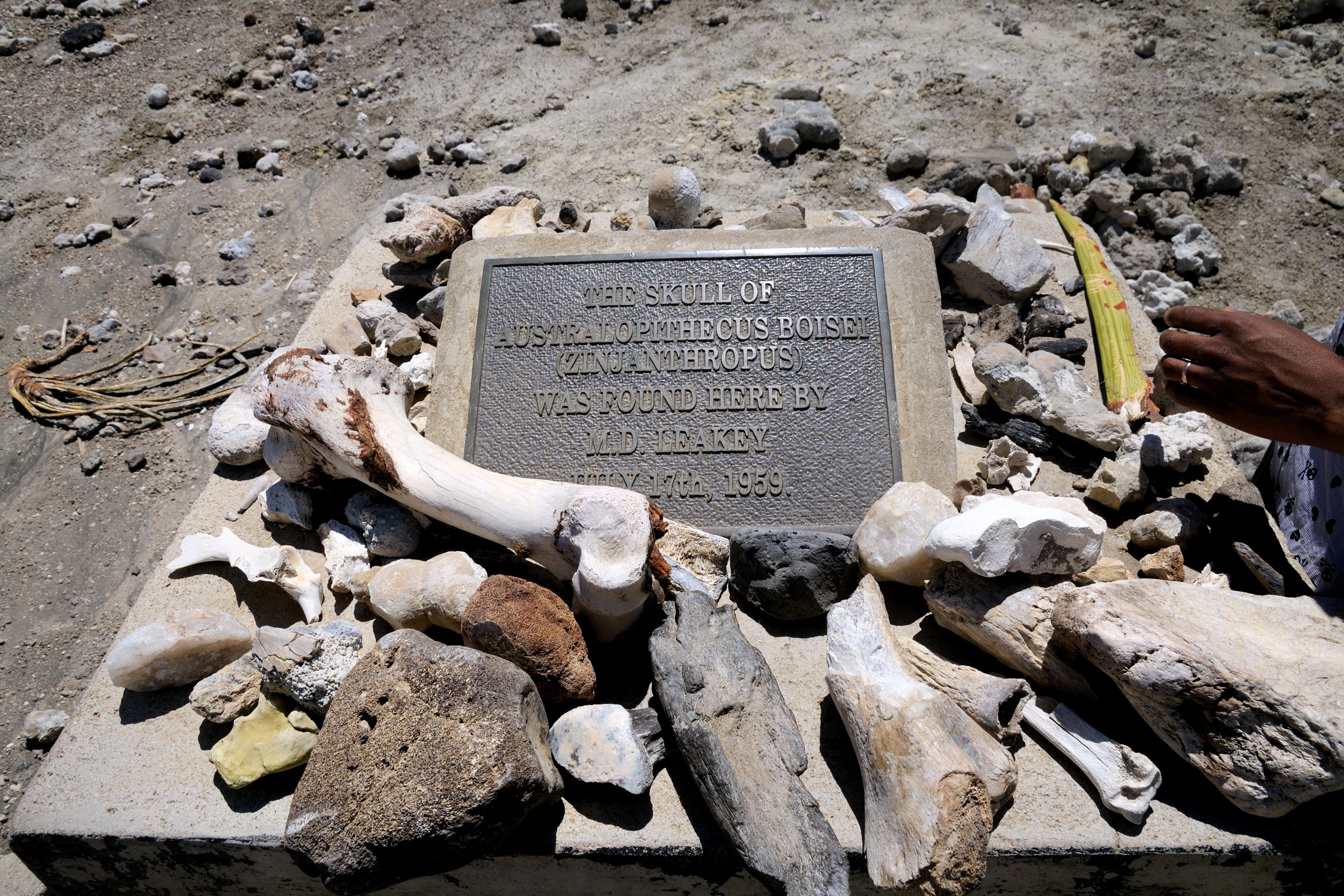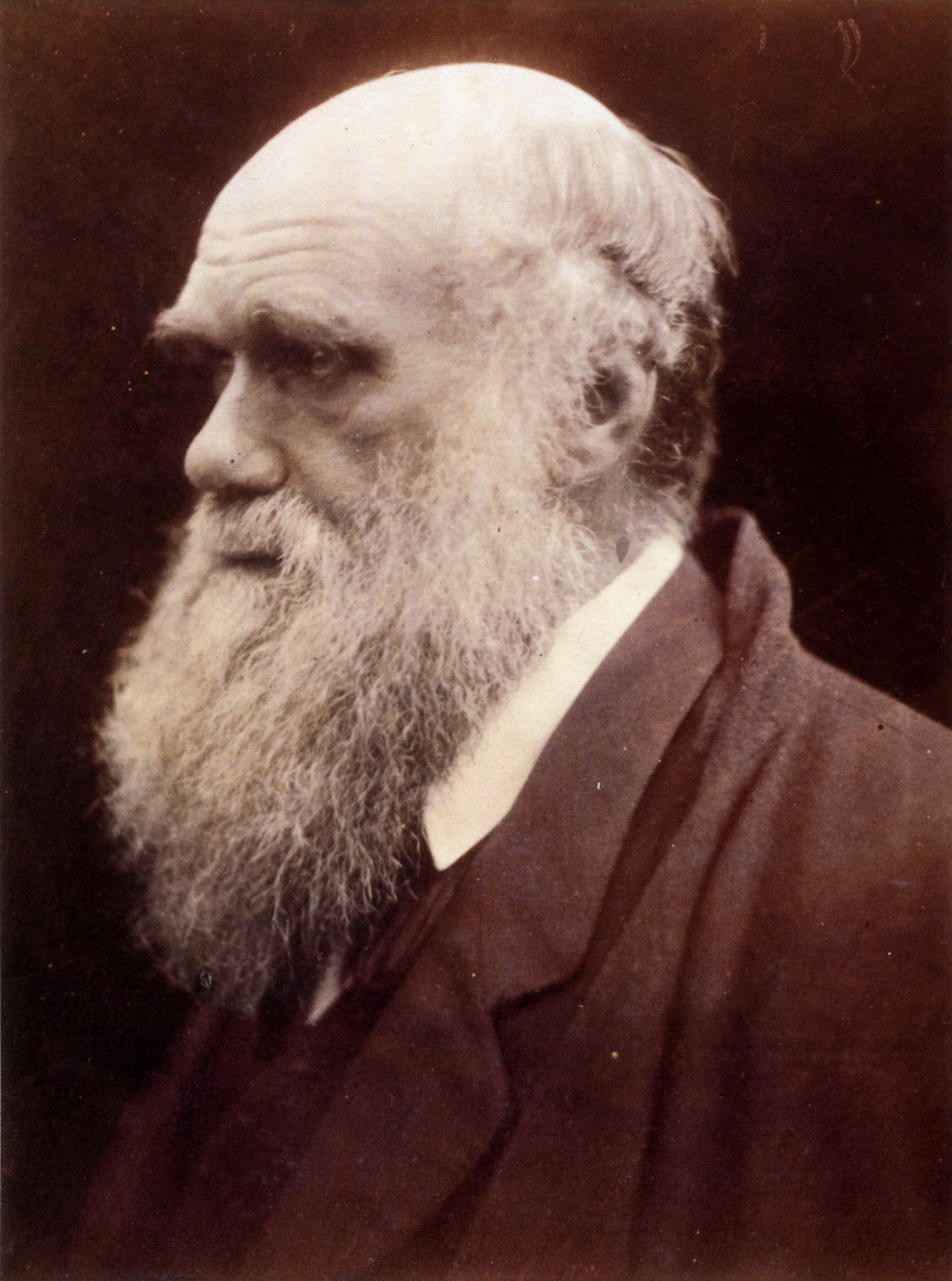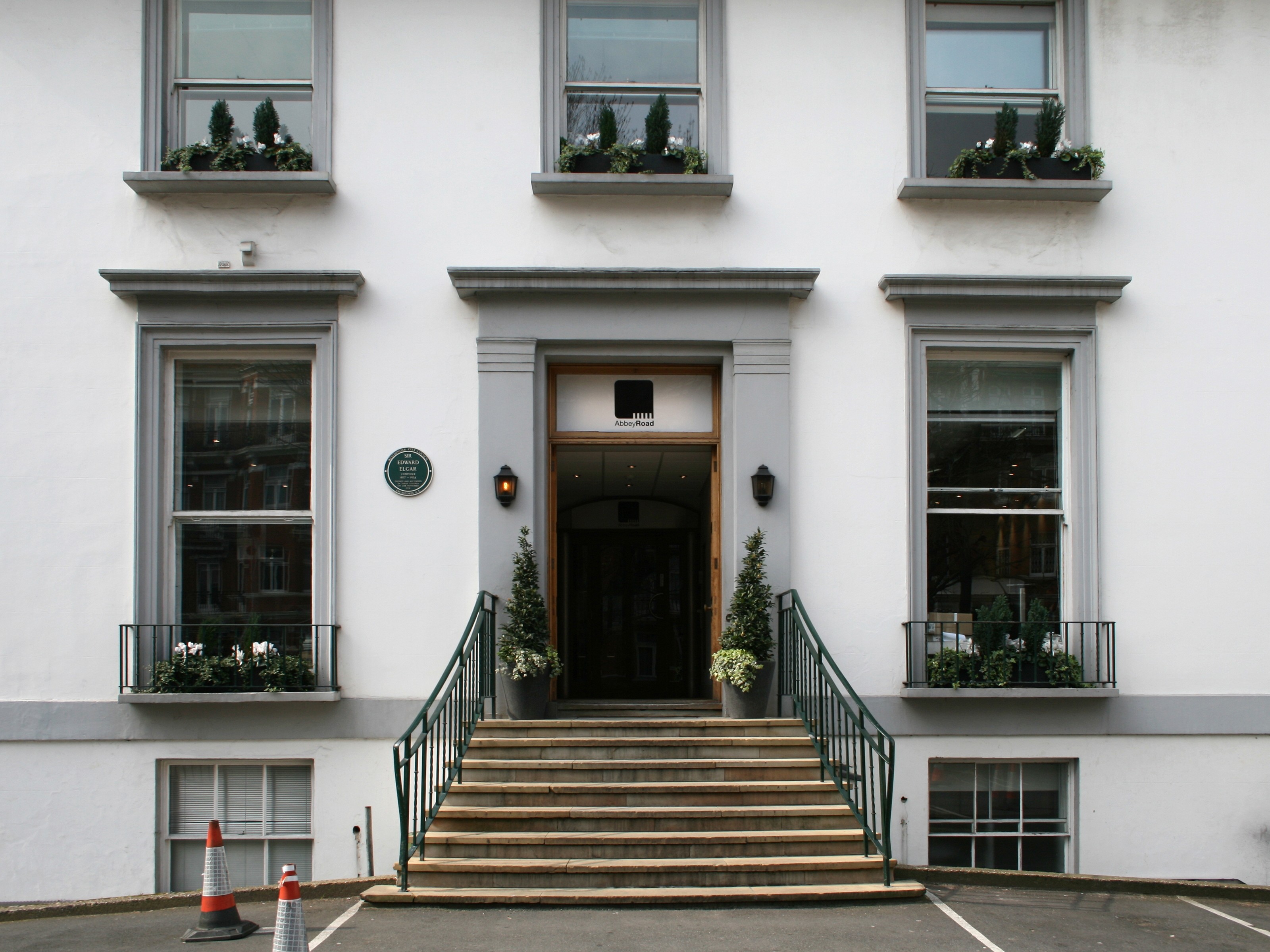|
Lucy (Australopithecus)
AL 288-1, commonly known as Lucy, is a collection of several hundred pieces of fossilized bone representing 40 percent of a female of the hominin species ''Australopithecus afarensis''. In Ethiopia, the assembly is also known as (ድንቅ ነሽ), which means "you are marvelous" in Amharic. Lucy was discovered in 1974 in Africa, at Hadar, a site in the Awash Valley of the Afar Triangle in Ethiopia, by paleoanthropologist Donald Johanson of the Cleveland Museum of Natural History. The Lucy specimen is an early australopithecine and is dated to about 3.2 million years ago. The skeleton presents a small skull akin to that of non-hominin apes, plus evidence of a walking-gait that was bipedal and upright, akin to that of humans (and other hominins); this combination supports the view of human evolution that bipedalism preceded increase in brain size. A 2016 study proposes that ''Australopithecus afarensis'' was also to a large extent tree-dwelling, though the extent of this ... [...More Info...] [...Related Items...] OR: [Wikipedia] [Google] [Baidu] |
Australopithecus Afarensis
''Australopithecus afarensis'' is an extinct species of australopithecine which lived from about 3.9–2.9 million years ago (mya) in the Pliocene of East Africa. The first fossils were discovered in the 1930s, but major fossil finds would not take place until the 1970s. From 1972 to 1977, the International Afar Research Expedition—led by anthropologists Maurice Taieb, Donald Johanson and Yves Coppens—unearthed several hundreds of hominin specimens in Hadar, Ethiopia, the most significant being the exceedingly well-preserved skeleton AL 288-1 (" Lucy") and the site AL 333 ("the First Family"). Beginning in 1974, Mary Leakey led an expedition into Laetoli, Tanzania, and notably recovered fossil trackways. In 1978, the species was first described, but this was followed by arguments for splitting the wealth of specimens into different species given the wide range of variation which had been attributed to sexual dimorphism (normal differences between males and females). ''A ... [...More Info...] [...Related Items...] OR: [Wikipedia] [Google] [Baidu] |
Cambridge University Press
Cambridge University Press is the university press of the University of Cambridge. Granted letters patent by Henry VIII of England, King Henry VIII in 1534, it is the oldest university press in the world. It is also the King's Printer. Cambridge University Press is a department of the University of Cambridge and is both an academic and educational publisher. It became part of Cambridge University Press & Assessment, following a merger with Cambridge Assessment in 2021. With a global sales presence, publishing hubs, and offices in more than 40 Country, countries, it publishes over 50,000 titles by authors from over 100 countries. Its publishing includes more than 380 academic journals, monographs, reference works, school and university textbooks, and English language teaching and learning publications. It also publishes Bibles, runs a bookshop in Cambridge, sells through Amazon, and has a conference venues business in Cambridge at the Pitt Building and the Sir Geoffrey Cass Spo ... [...More Info...] [...Related Items...] OR: [Wikipedia] [Google] [Baidu] |
Collège De France
The Collège de France (), formerly known as the ''Collège Royal'' or as the ''Collège impérial'' founded in 1530 by François I, is a higher education and research establishment ('' grand établissement'') in France. It is located in Paris near La Sorbonne. The Collège de France is considered to be France's most prestigious research establishment. Research and teaching are closely linked at the Collège de France, whose ambition is to teach "the knowledge that is being built up in all fields of literature, science and the arts". It offers high-level courses that are free, non-degree-granting and open to all without condition or registration. This gives it a special place in the French intellectual landscape. Overview The Collège is considered to be France's most prestigious research establishment. As of 2021, 21 Nobel Prize winners and 9 Fields Medalists have been affiliated with the Collège. It does not grant degrees. Each professor is required to give lectures wher ... [...More Info...] [...Related Items...] OR: [Wikipedia] [Google] [Baidu] |
Mary Leakey
Mary Douglas Leakey, FBA (née Nicol, 6 February 1913 – 9 December 1996) was a British paleoanthropologist who discovered the first fossilised ''Proconsul'' skull, an extinct ape which is now believed to be ancestral to humans. She also discovered the robust ''Zinjanthropus'' skull at Olduvai Gorge in Tanzania, eastern Africa. For much of her career she worked with her husband, Louis Leakey, at Olduvai Gorge, where they uncovered fossils of ancient hominines and the earliest hominins, as well as the stone tools produced by the latter group. Mary Leakey developed a system for classifying the stone tools found at Olduvai. She discovered the Laetoli footprints, and at the Laetoli site she discovered hominin fossils that were more than 3.75 million years old. During her career, Leakey discovered fifteen new species of animal. She also brought about the naming of a new genus. In 1972, after the death of her husband, Leakey became director of excavations at Olduvai. She main ... [...More Info...] [...Related Items...] OR: [Wikipedia] [Google] [Baidu] |
Arizona State University
Arizona State University (Arizona State or ASU) is a public research university in the Phoenix metropolitan area. Founded in 1885 by the 13th Arizona Territorial Legislature, ASU is one of the largest public universities by enrollment in the U.S. One of three universities governed by the Arizona Board of Regents, ASU is a member of the Universities Research Association and classified among "R1: Doctoral Universities – Very High Research Activity". ASU has nearly 150,000 students attending classes, with more than 38,000 students attending online, and 90,000 undergraduates and nearly 20,000 postgraduates across its five campuses and four regional learning centers throughout Arizona. ASU offers 350 degree options from its 17 colleges and more than 170 cross-discipline centers and institutes for undergraduates students, as well as more than 400 graduate degree and certificate programs. The Arizona State Sun Devils compete in 26 varsity-level sports in the NCAA Division ... [...More Info...] [...Related Items...] OR: [Wikipedia] [Google] [Baidu] |
Institute Of Human Origins
The Institute of Human Origins (IHO) is a non-profit, multidisciplinary research organization dedicated to the recovery and analysis of the fossil evidence for human evolution. It was founded by the team of paleoanthropologists that discovered Lucy, and became affiliated with Arizona State University in 1997. In 2014, IHO received the single largest grant dedicated to the research of human origins. Origins After finding Lucy during the "surge of discoveries" in the 1970s, Donald Johanson returned to Berkeley, California and founded the Institute of Human Origins with the mission of bridging social, earth, and life science approaches to the most important questions concerning the course, causes, and timing of events in the human career over deep time. Research and discoveries Fossil record of the earliest human evolution Ledi-Geraru is one of IHO's fieldwork sites in the fossil-rich Afar Region of Ethiopia. In 2013, graduate student Chalachew Seyoum discovered the lower mandib ... [...More Info...] [...Related Items...] OR: [Wikipedia] [Google] [Baidu] |
Hararghe
Hararghe ( am, ሐረርጌ ''Harärge''; Harari: ሀረርጌይ ''Harärgeyi'', Oromo: Harargee, so, Xararge) was a province of eastern Ethiopia with its capital in Harar. History Hararghe translates to "land of the Hararis". The region consisted mostly of the territory of the Emirate of Harar annexed by Menelik II in 1887. Including Ethiopia's part of the Ogaden, Haraghe was bounded on west by Shewa, northwest by Wollo Province, northeast by French Somaliland and Somaliland, and on the east by Somalia. Originally however Hararghe included the Sidamo, Bale and Arsi Province until Haile Selassie split the provinces. Hararghe was the historical homeland of the Harla people. Hararghe was altered as a result of Proclamation 1943/1, which created twelve ''taklai ghizat''s from the existing 42 provinces of varying sizes. A comparison of the two maps in Margary Perham, ''The Government of Ethiopia'' shows that Hararghe was created by combining the Sultanate of Aussa, the lands o ... [...More Info...] [...Related Items...] OR: [Wikipedia] [Google] [Baidu] |
History Of Ethiopia
Ethiopia is one of the oldest countries in Africa, the emergence of Ethiopian civilization dates back thousands of years. Due to migration and imperial expansion, it grew to include many other primarily Afro-Asiatic-speaking communities, including Amhara, Oromos, Somalis, Tigray, Afars, Sidama, Gurage, Agaw and Harari, among others. One of the early kingdoms to rise to power in the territory was the kingdom of D'mt in the 10th century BC, which established its capital at Yeha. In the first century AD the Aksumite Kingdom rose to power in the Tigray Region with its capital at Aksum and grew into a major power on the Red Sea, subjugating Yemen and Meroe. In the early fourth century, during the reign of Ezana, Christianity was declared the state religion. Ezana's reign is also when the Aksumites first identified themselves as " Ethiopians", and not long after, Philostorgius became the first foreign author to call the Aksumites Ethiopians. The Aksumite empire fell in ... [...More Info...] [...Related Items...] OR: [Wikipedia] [Google] [Baidu] |
Paleoanthropology
Paleoanthropology or paleo-anthropology is a branch of paleontology and anthropology which seeks to understand the early development of anatomically modern humans, a process known as hominization, through the reconstruction of evolutionary kinship lines within the family Hominidae, working from biological evidence (such as petrified skeletal remains, bone fragments, footprints) and cultural evidence (such as stone tools, artifacts, and settlement localities). The field draws from and combines primatology, paleontology, biological anthropology, and cultural anthropology. As technologies and methods advance, genetics plays an ever-increasing role, in particular to examine and compare DNA structure as a vital tool of research of the evolutionary kinship lines of related species and genera. Etymology The term paleoanthropology derives from Greek palaiós (παλαιός) "old, ancient", ánthrōpos (ἄνθρωπος) "man, human" and the suffix -logía (-λογία) "study of". Ho ... [...More Info...] [...Related Items...] OR: [Wikipedia] [Google] [Baidu] |
Hadar Formation
Hadar (also spelled ''Qad daqar'', ''Qadaqar''; Afar "white 'qidi''stream 'daqar'') Jon Kalb ''Adventures in the Bone Trade'' (New York: Copernicus Books, 2001), p. 83 is a paleontological site in Mille district, Administrative Zone 1 of the Afar Region, Ethiopia, 15 km upstream (west) of the A1 road's bridge across the Awash River (Adayitu kebele).E. N. Dimaggio et al., "Tephrostratigraphy and depositional environment of young (<2.94 Ma) Hadar Formation deposits at Ledi-Geraru, Afar, Ethiopia", ''Journal of African Earth Sciences'' 112A (December 2015), pp. 234–250 (Figure 2), . It is situated on the southern edge of the Afar Triangle (part of East Africa's ), along the left banks of the Awash River, between t ... [...More Info...] [...Related Items...] OR: [Wikipedia] [Google] [Baidu] |
Geologist
A geologist is a scientist who studies the solid, liquid, and gaseous matter that constitutes Earth and other terrestrial planets, as well as the processes that shape them. Geologists usually study geology, earth science, or geophysics, although backgrounds in physics, chemistry, biology, and other sciences are also useful. Field research (field work) is an important component of geology, although many subdisciplines incorporate laboratory and digitalized work. Geologists can be classified in a larger group of scientists, called geoscientists. Geologists work in the energy and mining sectors searching for natural resources such as petroleum, natural gas, precious and base metals. They are also in the forefront of preventing and mitigating damage from natural hazards and disasters such as earthquakes, volcanoes, tsunamis and landslides. Their studies are used to warn the general public of the occurrence of these events. Geologists are also important contributors to ... [...More Info...] [...Related Items...] OR: [Wikipedia] [Google] [Baidu] |
The Beatles
The Beatles were an English rock band, formed in Liverpool in 1960, that comprised John Lennon, Paul McCartney, George Harrison and Ringo Starr. They are regarded as the most influential band of all time and were integral to the development of 1960s counterculture and popular music's recognition as an art form. Rooted in skiffle, beat and 1950s rock 'n' roll, their sound incorporated elements of classical music and traditional pop in innovative ways; the band also explored music styles ranging from folk and Indian music to psychedelia and hard rock. As pioneers in recording, songwriting and artistic presentation, the Beatles revolutionised many aspects of the music industry and were often publicised as leaders of the era's youth and sociocultural movements. Led by primary songwriters Lennon and McCartney, the Beatles evolved from Lennon's previous group, the Quarrymen, and built their reputation playing clubs in Liverpool and Hamburg over three years from 196 ... [...More Info...] [...Related Items...] OR: [Wikipedia] [Google] [Baidu] |
.jpg)





_03.jpg)


